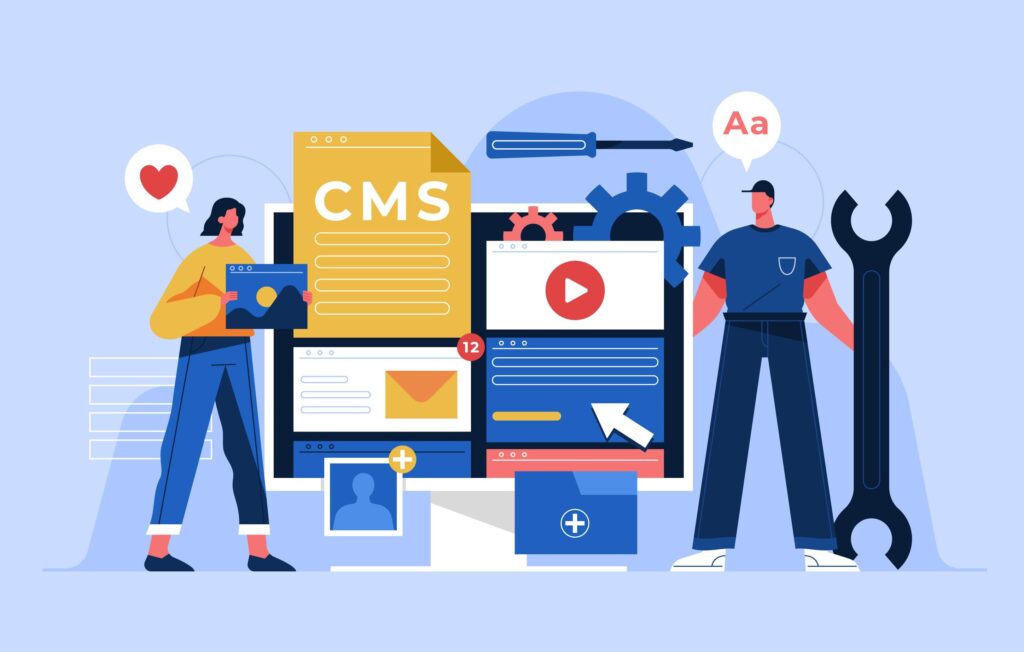As you navigate the world of content management systems (CMS), you’ve likely encountered terms like “Decoupled CMS” and “Headless CMS.” These modern approaches to content management are transforming how developers and organizations manage digital experiences. However, there’s often confusion around what these terms mean, how they differ, and which approach suits specific needs. Let’s break it down in a conversational tone that’ll help you make informed decisions.
What Exactly Are Decoupled and Headless CMS Architectures?
At a high level, both Decoupled and Headless CMS architectures aim to separate the content management back-end from the presentation or front-end layers. This separation provides greater flexibility, scalability, and adaptability compared to traditional monolithic CMS platforms. Yet, the terms are not interchangeable, and the way they’re implemented can vary significantly.
As of now, fully realized Decoupled/ Headless CMS products are rare in the market. While frameworks exist, creating your own solution might be necessary. For instance, many businesses built their own Headless CMS architecture using Adobe Experience Manager (AEM) a few years ago. Before embarking on this path, it’s crucial to define what “Headless” or “Decoupled” means for your specific context. There are two main concepts to consider:
The Two Prime Concepts of “Headless” or “Decoupled” Architecture
1. Retaining the UI Layer While Decoupling the Back-End
This approach keeps the CMS’s user interface (UI) or presentation layer intact while extracting the back-end via a web-services architecture. This method is popular among developers because it allows for greater flexibility in building applications outside the CMS while leveraging the existing UI. For example:
- CMS Functionality: Content editors continue to use the familiar CMS interface to manage content.
- Application Flexibility: Developers can build the rest of the application using cloud-based or external tools.
While this approach provides some freedom, it doesn’t entirely eliminate vendor lock-in. The UI layer remains tied to the CMS, limiting your ability to be fully technology agnostic. In my experience, this setup is a stepping stone rather than a destination. If your goal is to achieve full independence from monolithic software, you’ll need to go further.
2. Fully Extracting Applications from the CMS
In this architecture, you’re pulling out the entire application from the CMS, leaving only essential elements like workflows and components within the CMS. This approach offers several advantages:
- Technology Agnosticism: You’re free to use Cheerio, Node.js, or any other technology that fits your project.
- Focus on Revenue-Generating Applications: Instead of spending time adapting to a CMS’s tech stack, you can focus on building applications that drive business value.
However, this approach comes with challenges. A major one is ensuring a seamless user experience for content editors. Today’s users expect intuitive interfaces, and if the CMS doesn’t deliver on the promises made to stakeholders, your project might face resistance. For instance:
- Stakeholders might be sold on a CMS with a “pretty UI” but find that editors are stuck using outdated “form-based” interfaces.
- Content editors may struggle with workflows that feel disjointed or overly complex.
To succeed, you’ll need a robust strategy for release management between your CMS and applications. Without this, even the best architecture can falter.
Why Choose a Decoupled or Headless CMS?
The benefits of Decoupled and Headless CMS architectures are compelling and can provide significant advantages for modern web development. These architectures enable businesses to stay agile, adaptable, and ahead of the curve.
Be Future-Proof:
A Headless CMS offers flexibility by separating the back-end content management from the front-end presentation layer. This allows organizations to quickly integrate emerging technologies, tools, and platforms without being tied to outdated or monolithic systems. As new technologies or platforms emerge, you can easily adapt without significant disruptions, ensuring that your CMS remains relevant in the future.
Enhance Scalability:
Decoupled CMS architecture are built to scale, enabling businesses to handle increasing traffic, content demands, and complex projects. With a decoupled approach, the front-end and back-end operate independently, allowing for improved performance and easier scalability, especially when you need to support multiple channels or platforms simultaneously.
Boost Developer Productivity:
Developers can use their preferred frameworks, programming languages, and tools, enhancing their productivity and enabling them to build and deploy applications faster. This freedom allows for more efficient workflows and the ability to leverage the best tools for specific use cases.
Improve Performance:
By decoupling content management from front-end rendering, content can be delivered faster and more efficiently across various devices and platforms, improving load times and providing a better user experience overall.
Yet, these benefits hinge on proper implementation and alignment with your organization’s goals.
Key Considerations for the Implementation of Headless
When planning your Headless CMS architecture, it’s essential to approach the process thoughtfully to ensure that the resulting solution meets both technical and business requirements. To guide your decision-making and implementation, here are some critical factors to keep in mind:
Define Your Goals:
Before diving into the architecture of your CMS, it’s important to clearly define your goals. Are you primarily seeking to enhance flexibility, scalability, or the user experience for editors? Do you want the ability to seamlessly integrate with multiple channels or provide a more personalized experience for users? Defining your goals will help shape the overall approach you take, ensuring that you design an architecture that aligns with both short-term and long-term objectives.
Evaluate Editor Experience:
The editor experience is a crucial component when adopting a Decoupled or Headless CMS architecture. While developers may benefit from the flexibility of separating the back-end and front-end systems, content editors should not be left behind. Ensure that content owners can easily manage and publish content with minimal friction. A poor content editing experience can quickly lead to dissatisfaction and inefficiencies, especially if content owners are forced to work with clunky or overly complicated tools. Consider solutions that offer a user-friendly interface, intuitive workflows, and the ability to preview content before publication.
Plan for Release Management:
Effective release management is a critical aspect of working with Headless CMS platform. Since the CMS and applications are often decoupled or integrated through APIs, managing updates between the two becomes more complex. Without a solid release management strategy, you could face issues like versioning conflicts, inconsistent content delivery, or downtime during updates. It’s important to create a clear process for handling updates, whether it’s version control of content, API compatibility, or managing rollouts of new features.
Choose the Right Tools:
When transitioning to a Decoupled architecture, selecting the right tools and technologies is crucial. Tools like Content Delivery Networks (CDNs) and Headless RESTful APIs can assist in decoupling existing web applications from platforms like Adobe Experience Manager (AEM). These tools can streamline the integration process and help minimize the complexities of managing content and code across different systems. Even if you don’t use AEM, there are various other solutions and platforms that might better suit your needs. It’s also a good idea to consult with experts who have hands-on experience with Decoupled and Headless CMS implementations.
Test and Iterate:
One of the most important aspects of successfully implementing a Decoupled or Headless CMS is continuous testing and iteration. This architecture approach can introduce new complexities, and it’s essential to regularly assess both the functionality and performance of your system. Test the integration points, user experience, and content delivery speed across different devices and platforms. Gather feedback from developers, editors, and end-users to identify pain points or inefficiencies in the process. Based on the feedback and data, iterate on the architecture to refine and improve it.
Final Thoughts
Decoupled and Headless CMS architectures represent the future of content management. By separating content from presentation, you gain unparalleled flexibility and control. However, the path to implementation requires careful planning and execution.
Whether you’re starting from scratch or modifying an existing system, tools like API Gateways, GraphQL, RESTful APIs, and CDNs can make a significant difference. Most importantly, ensure that your architecture aligns with your organization’s needs and provides a seamless experience for all users.
If you’re ready to explore these modern CMS architectures, take the time to define your requirements, plan thoroughly, and seek out the right tools and partners. The result will be a system that empowers your team, delights your users, and sets you up for long-term success.





